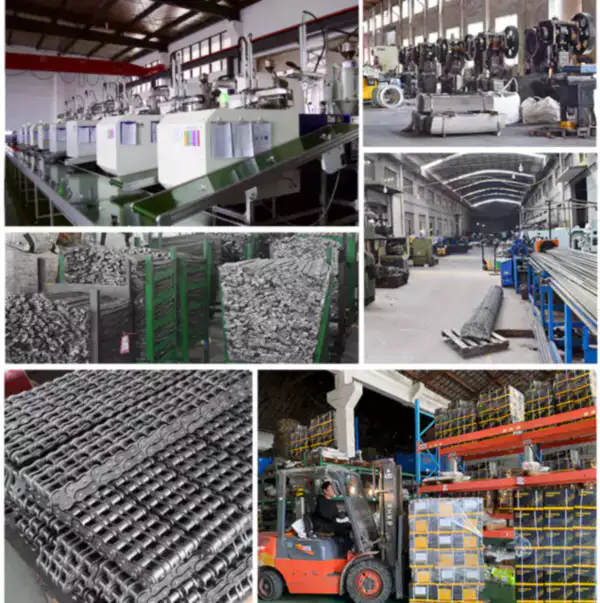1. Introduction
Gripper chains play a crucial role in handling sensitive or fragile products within various industries. The right selection of gripper chains ensures efficient and safe product handling, minimizing the risk of damage or accidents. In this article, we will explore the key considerations for choosing gripper chains for sensitive or fragile product handling.

2. Understanding the Importance of Gripper Chains
Gripper chains, also known as conveyor chains, are specialized chains designed to securely grip and transport products along a conveyor system. The choice of gripper chains is critical, especially when dealing with sensitive or fragile products that require gentle handling to prevent damage.

2.1 Chain Material and Coating Selection
Choosing the right chain material and coating is crucial to ensure compatibility with sensitive or fragile products. Materials such as stainless steel, plastic, or low-friction coatings like PTFE provide excellent non-abrasive and non-contaminating surface properties.
2.2 Understanding Product Characteristics
An in-depth understanding of the product's characteristics is essential when selecting gripper chains. Factors like weight, shape, dimensions, and surface sensitivity determine the type of gripper chain suitable for safe and efficient handling.
2.3 Chain Configuration and Design
The configuration and design of gripper chains should be tailored to the specific requirements of sensitive or fragile products. Features like adjustable grip force, gentle product release mechanisms, and anti-vibration properties contribute to optimal product handling.
2.4 Lubrication and Maintenance
Proper lubrication and maintenance of gripper chains are crucial for smooth operation and prolonged lifespan. Considering lubrication options compatible with sensitive or fragile products is essential to avoid contamination or adverse reactions.
2.5 Compatibility with Conveyor System
Ensuring the compatibility of gripper chains with the existing conveyor system is vital. Factors like chain pitch, sprocket tooth count, and conveyor speed should be carefully assessed to guarantee seamless integration and optimal performance.

3. Gripper Chains' Purchasing Guide
| Consideration | Guidelines |
|---|---|
| Product Compatibility | Ensure the gripper chains are compatible with the specific product requirements. |
| Material and Coating | Choose materials and coatings that are non-abrasive and non-contaminating. |
| Product Handling Efficiency | Consider features like adjustable grip force and gentle product release mechanisms. |
| Maintenance and Lubrication | Assess lubrication options compatible with sensitive or fragile products. |
| Conveyor System Compatibility | Ensure gripper chains integrate seamlessly with the existing conveyor system. |
Sprockets for Gripper Chains
Sprockets are an integral part of gripper chains, and their importance cannot be underestimated. Sprockets provide the necessary drive and motion for gripper chains, ensuring the smooth and efficient transport of sensitive or fragile products.

The selection of sprockets should be done in close consideration with gripper chains to ensure compatibility and optimal performance. Our company offers a wide range of sprockets specifically designed for gripper chains, providing a perfect match to meet your product handling requirements.

Our Advantages:
- Extensive product knowledge and expertise in gripper chains for sensitive or fragile product handling.
- Customizable solutions tailored to meet specific product handling requirements.
- High-quality materials and coatings to ensure non-abrasive and non-contaminating surface properties.
- Seamless integration with existing conveyor systems, optimizing operational efficiency.
- Reliable and durable products with excellent performance and minimal maintenance requirements.
Q&A: Gripper Chains for Sensitive or Fragile Product Handling
Q: How do I determine the right grip force for my sensitive product?
A: The right grip force depends on factors such as product weight, surface sensitivity, and required stability during transportation. Conducting tests and trials with a range of grip forces is recommended to achieve optimal handling without causing damage.
Q: Can gripper chains be used for high-speed applications?
A: Yes, gripper chains can be used for high-speed applications by selecting chains with appropriate materials, coatings, and designs to ensure smooth operation and minimize vibration.
Q: How often should I lubricate gripper chains?
A: The frequency of lubrication depends on various factors, including product type, chain speed, and ambient conditions. Regular visual inspections and monitoring chain performance can help determine the ideal lubrication intervals.
Edited by Zqq.
